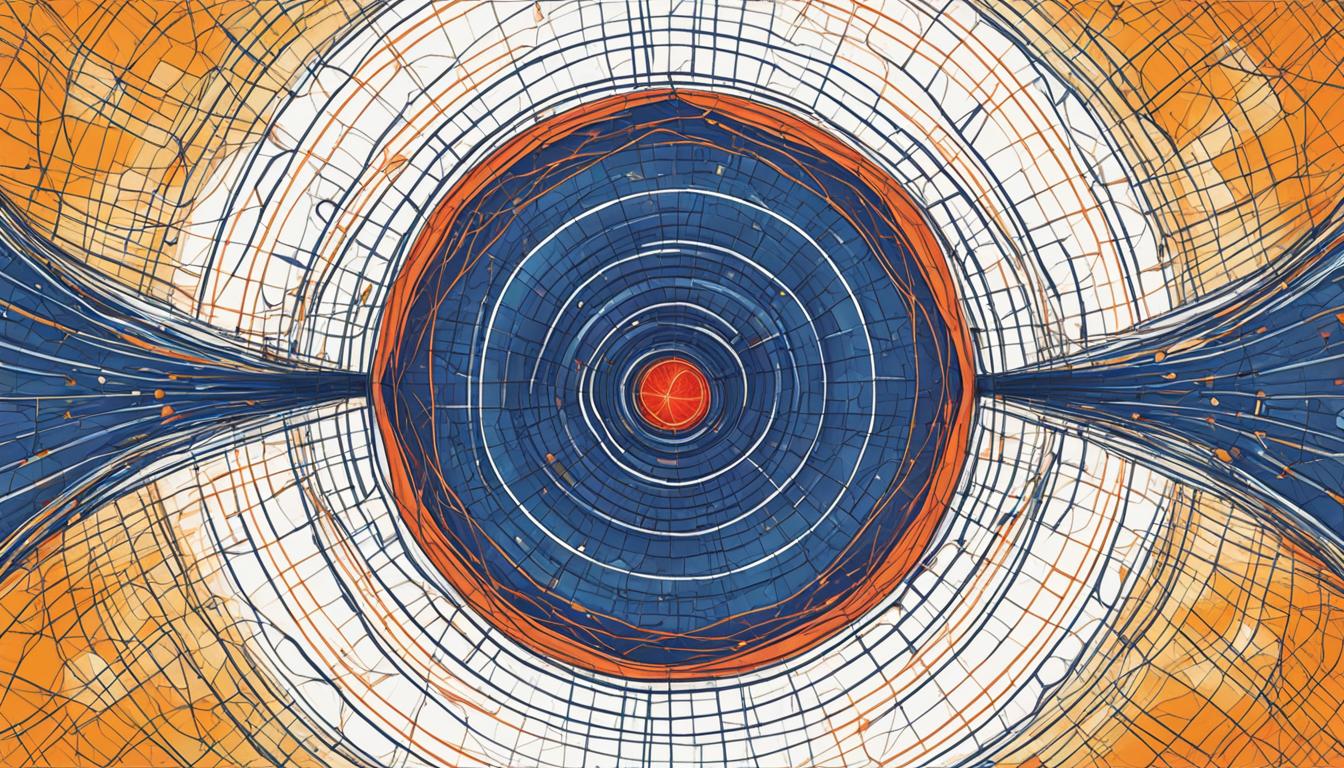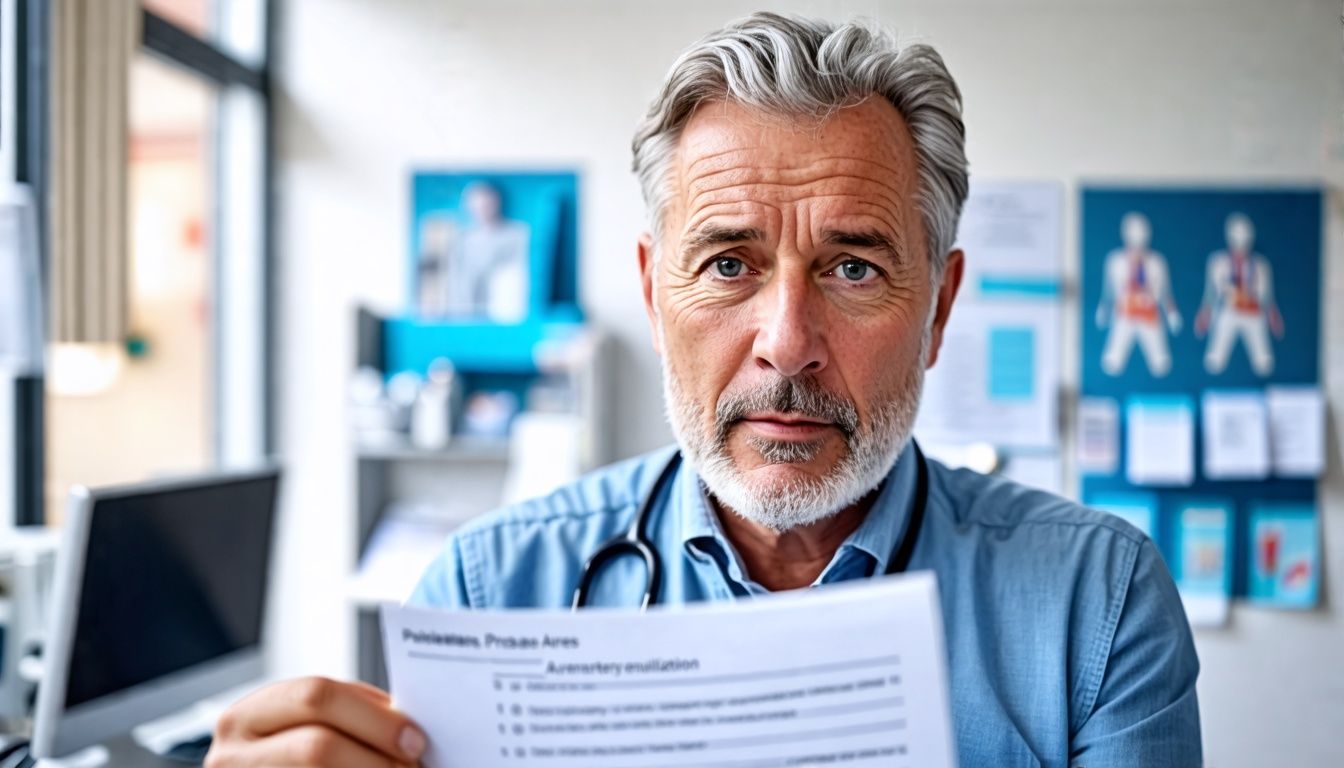The prostate gland, located beneath the bladder and in front of the rectum, plays a crucial role in male reproductive health. It secretes fluid that nourishes sperm and surrounds the urethra, the tube that carries urine from the bladder. Two common benign conditions that can affect the prostate are benign prostatic hyperplasia (BPH) and prostatitis.
Do prostate problems cause testicle pain? Is there a connection between prostate problems and testicle pain? In this article, we will explore the relationship between prostate issues and testicular discomfort to help you understand the potential causes and seek appropriate medical evaluation and treatment.
Key Takeaways:
- Prostate problems, such as BPH and prostatitis, can cause testicle pain.
- Inflammation or enlargement of the prostate can lead to referred pain in the testicles.
- Seek medical evaluation from a healthcare professional for proper diagnosis and treatment.
- Addressing prostate-related issues can contribute to overall well-being.
- Consult a urologist for comprehensive prostate health assessment.
Benign Prostatic Hyperplasia (BPH): Symptoms and Treatment Options
Benign Prostatic Hyperplasia (BPH) is a noncancerous enlargement of the prostate gland that primarily affects older men. It is a common condition that can cause various urinary symptoms and impact a man’s quality of life.
Common symptoms of BPH include:
- Difficulty starting to urinate
- Weak urinary stream
- Increased frequency of urination, especially at night
- Leakage of urine
- Incomplete emptying of the bladder
If you are experiencing any of these symptoms, it is essential to consult a healthcare professional for a proper diagnosis.
Treatment options for BPH aim to alleviate symptoms and improve urinary function. The choice of treatment depends on the severity of symptoms and the impact on the patient’s daily life. Here are the different treatment options for BPH:
- Dietary and lifestyle modifications: Making changes in diet and lifestyle, such as reducing caffeine and alcohol intake, exercising regularly, and emptying the bladder completely, can help manage mild symptoms of BPH.
- Medications: Various medications can be prescribed to alleviate BPH symptoms. These medications work by either shrinking the prostate gland or relaxing the muscles of the prostate and bladder, allowing for improved urine flow.
- Surgical procedures: In more severe cases, surgical interventions may be necessary. Transurethral resection of the prostate (TURP) and laser treatment are common surgical procedures used to remove excess prostate tissue and relieve urinary obstruction.
It is important to discuss treatment options with your healthcare provider who will consider your symptoms, medical history, and personal preferences before recommending the most appropriate course of action.
Testimonial:
“Since undergoing a laser treatment for my BPH, I have noticed a significant improvement in my urinary symptoms. No more frequent trips to the bathroom at night, and my urinary stream is much stronger. It has greatly improved my quality of life!”
Remember, if you are experiencing symptoms of BPH, don’t hesitate to seek medical advice. A healthcare professional can help diagnose the condition and provide appropriate treatment options tailored to your specific needs.
Prostatitis: Symptoms, Diagnosis, and Treatment
Prostatitis refers to inflammation or infection of the prostate gland. It can cause pain in areas such as the testicles, penis, lower back, and lower abdomen. Urinary symptoms like urgency, frequency, weak stream, and pain or burning during urination can also occur.
Diagnosing prostatitis is based on symptoms, physical examination, and sometimes urine testing or prostate massage. It is important to note that there are multiple subtypes of prostatitis, including acute bacterial prostatitis, chronic bacterial prostatitis, chronic pelvic pain syndrome, and asymptomatic inflammatory prostatitis. Each subtype may present differently and require distinct approaches to diagnosis and treatment.
Symptoms of Prostatitis:
- Pain in the testicles, penis, lower back, and lower abdomen
- Urinary symptoms such as urgency, frequency, weak stream, and pain or burning during urination
- Flu-like symptoms, including fever, chills, and body aches, in cases of acute bacterial prostatitis
Diagnosing prostatitis involves evaluating the patient’s symptoms, conducting a physical examination, and ruling out other potential causes of the symptoms. In some cases, urine tests may be performed to check for signs of infection or inflammation. Prostate massage, where the prostate is gently massaged to collect fluid for testing, may also be used for diagnosis in certain situations.
Treatment Options for Prostatitis:
The choice of treatment for prostatitis depends on the specific subtype and the severity of symptoms. Treatment options can include:
- Lifestyle modifications, such as avoiding irritants and triggers, managing stress, and maintaining good prostate health
- Relaxation techniques, such as pelvic floor muscle exercises and biofeedback, to help relieve pain and improve urinary symptoms
- Medications for pain and inflammation, such as nonsteroidal anti-inflammatory drugs (NSAIDs) and alpha-blockers
- Antibiotic therapy, prescribed for bacterial prostatitis, to target and eliminate the underlying infection
- Surgical drainage, in rare cases where prostatic abscess or severe urinary retention occurs
It is important to consult with a healthcare professional, such as a urologist, for an accurate diagnosis and appropriate treatment plan for prostatitis. With proper management, many men with prostatitis can find relief from their symptoms and improve their quality of life.

| Type of Prostatitis | Symptoms | Treatment |
|---|---|---|
| Acute bacterial prostatitis | Pain in the lower back, groin, genitals Fever, chills, body aches Urinary symptoms |
Antibiotics Pain relievers Drink plenty of fluids Bed rest Stool softeners (to prevent constipation) |
| Chronic bacterial prostatitis | Recurrent urinary tract infections Persistent pain in the lower abdomen, groin, genitals Urinary symptoms |
Antibiotics (for an extended period) Pain relievers Hormonal therapy (in some cases) Hot baths or sitz baths Regular ejaculation |
| Chronic pelvic pain syndrome | Persistent or recurrent pelvic pain Pain in the perineum, genitals, lower back Urinary symptoms |
Pain relievers (NSAIDs) Alpha-blockers Physical therapy (including pelvic floor exercises) Psychological counseling or support |
| Asymptomatic inflammatory prostatitis | No specific symptoms | No treatment required, unless symptoms develop Monitor for any changes or symptoms |
The Relationship Between Prostate Problems and Testicle Pain
While the prostate gland is not directly connected to the testicles, it is possible for prostate problems to cause testicle pain. In conditions like BPH or prostatitis, inflammation or enlargement of the prostate can lead to referred pain in the testicles. This pain can be experienced as a dull ache or discomfort in the testicles or in the area between the scrotum and rectum. It is essential to seek medical evaluation to determine the underlying cause of testicular pain and provide appropriate treatment.

Conclusion
Understanding the potential connection between prostate problems and testicle pain is crucial for maintaining good reproductive health. Conditions like benign prostatic hyperplasia (BPH) and prostatitis can give rise to symptoms that include discomfort in the testicles. Seeking medical evaluation and treatment from a urologist can help identify the underlying cause of testicle pain and provide appropriate management strategies.
By addressing any prostate-related issues, individuals can contribute to their overall well-being and reduce the risk of complications. Whether it’s through lifestyle modifications, medications, or surgical procedures, taking proactive steps to manage prostate pain can greatly improve one’s quality of life. Regular check-ups and open communication with healthcare professionals are key in preventing and addressing testicle pain related to prostate conditions.
Remember, if you experience any testicular discomfort or have concerns about your prostate health, don’t hesitate to reach out to a healthcare provider. Taking care of your urological health ensures a healthy and fulfilling life.
FAQ
Can prostate problems cause testicle pain?
Yes, prostate problems such as prostatitis or benign prostatic hyperplasia (BPH) can cause testicle pain. In conditions like BPH or prostatitis, inflammation or enlargement of the prostate can lead to referred pain in the testicles.
What are the symptoms of benign prostatic hyperplasia (BPH)?
Common symptoms of BPH include difficulty starting to urinate, weak urinary stream, increased frequency of urination (especially at night), leakage of urine, and incomplete emptying of the bladder.
What are the treatment options for BPH?
Treatment options for BPH include dietary and lifestyle modifications, medications to shrink the prostate or relax the prostate and bladder muscles, and surgical procedures like transurethral resection of the prostate (TURP) or laser treatment to remove excess prostate tissue.
What are the symptoms of prostatitis?
Symptoms of prostatitis can include testicle pain, pain in the penis, lower back pain, lower abdominal pain, urgency, frequency, weak stream, and pain or burning during urination.
How is prostatitis diagnosed?
Diagnosis of prostatitis is based on symptoms, physical examination, and sometimes urine testing or prostate massage.
What are the treatment options for prostatitis?
Treatment options for prostatitis include lifestyle modifications, relaxation techniques, medications for pain and inflammation, antibiotic therapy for bacterial prostatitis, and surgical drainage in some cases.
What is the relationship between prostate problems and testicle pain?
While the prostate gland is not directly connected to the testicles, inflammation or enlargement of the prostate can lead to referred pain in the testicles. Conditions like BPH and prostatitis can cause symptoms that include testicular discomfort.
How can testicle pain caused by prostate problems be managed?
Seeking medical evaluation and treatment from a healthcare professional, such as a urologist, can help identify the underlying cause of testicle pain and provide appropriate management strategies. These may include addressing the prostate issue directly, relieving pain and inflammation, and managing any urinary symptoms.
What can I do to maintain good prostate health?
To maintain good prostate health, it is important to stay physically active, maintain a healthy weight, eat a balanced diet rich in fruits, vegetables, and whole grains, limit alcohol consumption, quit smoking, and have regular check-ups with a healthcare professional.
What is the connection between prostate pain and testicles?
Conditions like BPH and prostatitis can cause inflammation or enlargement of the prostate, leading to referred pain in the testicles. This pain can be experienced as a dull ache or discomfort in the testicles or in the area between the scrotum and rectum.
Do Prostate Sensitivity and Nerve Endings Contribute to Testicle Pain?
Prostate nerve ending sensitivity may contribute to testicle pain. When the prostate becomes inflamed or infected, it can irritate the nearby nerve endings, leading to discomfort in the testicles. This connection highlights the importance of addressing prostate health to alleviate potential pain in the testicular region.



